


The People - Economy
The economy of the Inuvialuit was geared towards hunting and fishing, and both activities were the focus of considerable technological sophistication. Adept sea 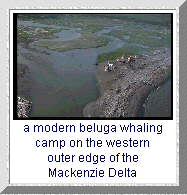 mammal hunters, the Inuvialuit had two kinds of boat; the fleet single-man kayak, and the roomy umiaq, used for both transportation and hunting. Beluga hunting was done from a kayak, often with dozens of men forming a line across the mouth of a bay, driving a pod of beluga before them. The frightened animals would ground themselves in the shallows, where it was simple matter to lance them to death. The shape of Kogmalit Bay was particularly handy for this kind of hunting.
mammal hunters, the Inuvialuit had two kinds of boat; the fleet single-man kayak, and the roomy umiaq, used for both transportation and hunting. Beluga hunting was done from a kayak, often with dozens of men forming a line across the mouth of a bay, driving a pod of beluga before them. The frightened animals would ground themselves in the shallows, where it was simple matter to lance them to death. The shape of Kogmalit Bay was particularly handy for this kind of hunting.
Bowhead whaling was another matter, involving deeper waters and larger boats. The umiaq was the preferred craft here, propelled by six or eight paddlers, often women, with a harpooner in the bow, and the umialiq himself as the sternsman. Bowheads are usually slow, peaceful animals, easily approached as they sleep on the surface of the sea. The harpoon used in hunting them was an immense weapon two-and-a-half metres long, and very heavy, with a detachable, toggling head. As described by the mid-19th century explorer Robert M'Clure, who witnessed a whale hunt off Cape Bathurst,
Seal hunting was a less dramatic pursuit. A number of techniques were used, including harpooning in open water, using a kayak, or at breathing holes through the ice during the winter. Seals were also taken with nets. 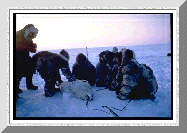
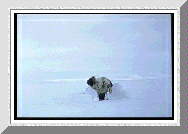
Nets were also used for fishing. Made of baleen or sinew they were set under the ice of winter, or in the open waters of summer, suspended from bark floats. In warm weather, special poles twenty or thirty metres or more in length were used to set the nets from shore. Fish were also speared, and taken with hooks through the ice. Most Inuvialuit archaeological sites abound with fishing gear, and with fish bone.
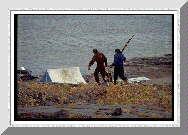
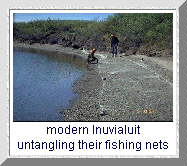
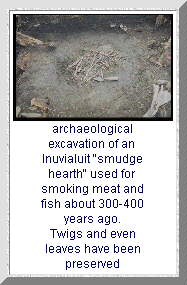
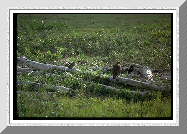 Waterfowl and muskrats were hunted from kayaks using a multi-pronged spear and throwing-board. Ptarmigan were netted. Caribou were the most important land animal, however, valued not only for their meat, but even more for their hides, which was necessary for warm winter clothing. Hunting techniques included stalking with bows, communal drives, and spearing at water crossing, again using kayaks. The best caribou hunting was in the foothills of the Richardsons, to the west of the Mackenzie, and in Eskimo Lakes-Anderson River-Cape Bathurst area, to the east. Groups like the Kittegaryumiut who spent the caribou-hunting season hunting beluga had to trade for hides.
Waterfowl and muskrats were hunted from kayaks using a multi-pronged spear and throwing-board. Ptarmigan were netted. Caribou were the most important land animal, however, valued not only for their meat, but even more for their hides, which was necessary for warm winter clothing. Hunting techniques included stalking with bows, communal drives, and spearing at water crossing, again using kayaks. The best caribou hunting was in the foothills of the Richardsons, to the west of the Mackenzie, and in Eskimo Lakes-Anderson River-Cape Bathurst area, to the east. Groups like the Kittegaryumiut who spent the caribou-hunting season hunting beluga had to trade for hides.

[Opening Page | The Land | The People | From Ancient Times | ...To 1902 | Survival |About the Researcher]